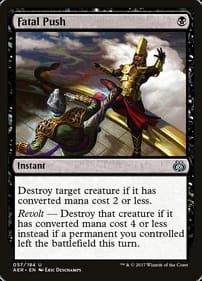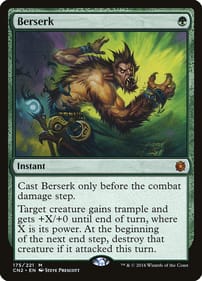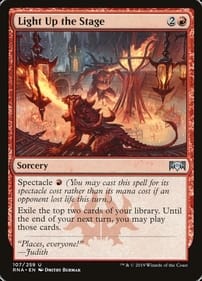Beginner guide to grading
Grading cards has become very popular, especially within the Magic the Gathering and Pokémon communities. Due to this we receive a lot of questions about this topic and have made this guide to better answer some of your questions. Hopefully this guide can help you decide whether grading is the right choice for you.
An expensive and time-consuming affair
Many have become interested in having their cards graded, because they have heard tales of the high value a graded card with top marks can have. Two good examples are the Alpha Black Lotus which sold for 511.000 USD and the First Edition Charizard which sold for 211.000 USD….some pretty crazy numbers!! So, first and foremost, it is important to understand that a high scoring grading is incredibly difficult to obtain. This is the reason collectors are willing to pay enormous prizes to get a graded card. Yes, it is expensive to have a card graded. So if you are considering having your cards graded as an investment, be aware that it is really only worth it with specific cards, which hold a lot of possible value. Unfortunately there is also a very long waiting period to get a card graded due to the amount of people choosing to have it done these days. So you need to carefully consider whether it is truly worth your time and money to have a card graded. As a start, you should at least expect that the process will take between 3-6 months unless you are willing to pay for express services.

What is a graded card?
A graded card has been handled by a professional grading-company to ascertain it’s value. The most popular companies are Professional Sports Authenticators (PSA), Beckett Grading Services (BGS) and Certified Guaranty Company (CGC). These companies are all in the USA, and currently it is not possible to get your cards graded by them in Europe. The grading process entails that the card’s authenticity is verified. Then the card’s condition is evaluated before it is sealed in a solid plastic mold. The grading-scale runs from 1-10 and it is especially cards graded with a 10 that sell for high amounts of money.
How is a card valued?
When submitted for grading, a card is evaluated based on four different parameters. These four parameters together give the card its grading.

Centering: How nicely is the card centered? The centering is measured from top to bottom and from side to side.
Corners: How clean are the corners? Each corner is evaluated by investigating the front and backside of the card.
Edges: How clean are the edges? The edges of the card are investigated. Again on both the front and the back.
Surface: How nice is the surface? Scratches, printing errors, bends and other damages subtract from the value of the card.
How is the score calculated?
When the four different parameters mentioned above have been evaluated and graded, the card receives one final overarching grade which determines the card’s value. Even though a card is in a good condition with very little damage, even small issues will subtract from the value significantly. As a rule of thumb, a card cannot receive a higher total score than what it has been given in the four parameters.
Example
If you have a card which scores a 10 in three parameters, but only a five on the last one, it can “only” receive a total grade of 6. Since a card requires top marks in all parameters to receive a high total grading, it is incredibly difficult to obtain. In short, it is the lowest grade that determines the final verdict. Even though a card has been pulled straight from the packaging, it can be damaged during production or have been printed with a bad centering.
Which card should I grade?
There are many reasons to have your cards graded, it is however very expensive and time consuming. The cards need to be sent all the way to the USA and depending on what you are willing to pay, it can take several months. Many people are interested in having their cards graded because it can increase the cards’ values if they have been properly stored or if they receive good marks. Sentimentality can also be a reason to have a card graded, as they are easier to take care of after being graded due to the protective casing. Generally, the more valuable a card is, the more it makes sense to have it graded to protect its value and make sure that it is authentic. It is important to be aware that Professional Sports Authentication charges more if a card scores higher grades, because their services guarantee that the card is real.
Have realistic expectations and do your homework
It is important to have realistic expectations to the grading of your card. Grading is not a way to earn quick cash. The best way to determine a card’s condition is to place it on a black surface and investigate it thoroughly regarding the four parameters used in the grading process. You can get a bit of insight by comparing your card with previously graded cards and what grades they have received. To obtain the high 9 and 10 grades the card needs to be almost perfect and can’t have any errors.
Especially with Pokémon cards any scratches or marks in the holo-foil surface can detract greatly from a card’s total grade. Likewise, any white spots around the edges will greatly decrease the score.
Grading terminology
While investigating what it takes to get a card graded, you will come across different grading-terms – especially with cards graded by Beckett and CGC. Below is a short explanation of the most important terms and their meaning:
Basic
Refers to a card where one parameter’s grade is below the total grade. An example would be if a card receives a 9 in three parameters and a single 8.5, but the total grade ends at a 9. This would be called a 9-basic. If the grades are 9.5, 9, 9, and 8.5 for a total of 9, you would call it a “basic+”.

Quad
Refers to a card where all the parameters have the same score as the total grade. An example is if a card scores 9, 9, 9, and 9 in all parameters and the total grade is also 9. This is a 9-quad. If the card is graded 9, 9, 9, and 9.5 it is called a “quad+”. Many collectors like quads because of the symmetry in their scores. To people who hunt the highest average grade, quads are especially sought after. A quad will always be more valuable than a basic. Be aware that it is only the Beckett Grading Services and the Certified Guaranty Company that utilize these four parameters (also called subgrades). At the Professional Sports Authenticators you only receive a single overall grade.

Overgraded/Undergraded
These terms are used when someone disagrees with a given grade. The cards are evaluated by people and as such mistakes can happen. There are also cards which end up being damaged in the process of being inserted into the protective casing. Some people consider it an honor to find and resubmit already graded cards in the hopes that the cards will receive a higher grading.
Pop / Pop Report
All the different grading-companies have a publicly available record of which and how many cards they have graded, as well as which grades a specific card has received. These records can be used to investigate how rare a card with a certain grade is. For cards with a high value this can mean a significant difference in prize, if there is only a limited number of graded cards, or if you happen to have the best-graded of a specific card in the world. Some people will misinterpret a “low pop” to mean that a card is valuable just because there are not a lot of graded copies. However, a worthless card which no one collects, does not necessarily become valuable just because there isn’t a lot of graded copies yet.
How much is my card worth?
So what is my Charizard worth? This is a question we receive often. Our first advice is not to be blinded by a graded card and their listed pricing. Everyone on Ebay can list a card at whatever price they like. Here is a small guide to start:
- Find the right version of your card. This is easiest if you search for its “name+collector’s number”
- Use Ebay’s sold listings, Cardmarket and other places with public sales to find out how much the card is usually sold for
- Remember to be realistic about the condition of your card and find something that resembles it. See our condition guide here.
- Avoid comparing with a graded card even though it is tempting. A card is not a PSA 9 until it has been placed within the casing and has been officially graded.
What now?
We receive a lot of questions about sending cards in for grading. Due to the long waiting times at the different grading-companies, we don’t offer this service. If you are interested in selling a collection or a graded card, you are more than welcome to contact us at info@thecardcollective.dk
We also provide card evaluations as a service. If you wish to have your collection valued, the starting price is 250 DKK and 150 DKK per additional hour. For this price you will receive an evaluation of all your cards, sorted in an excel file, so you have a spreadsheet of your cards and their current value. From this you can better determine whether to send in your cards to be graded.














